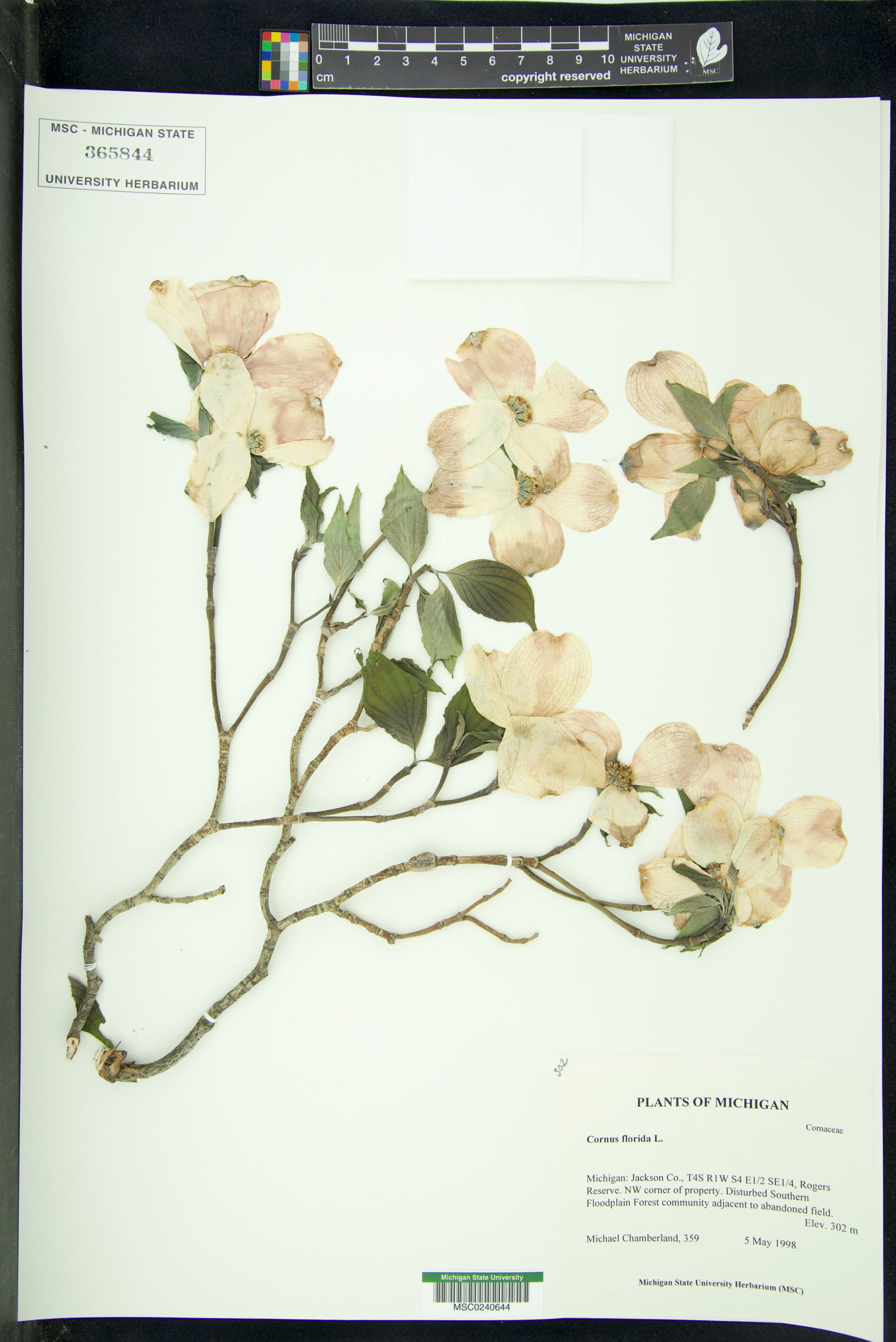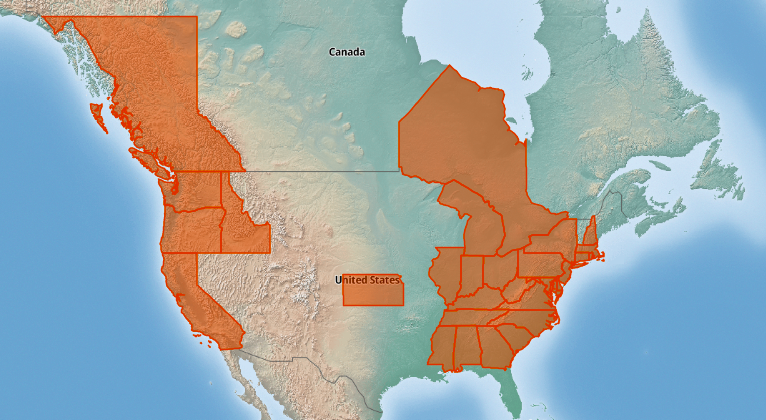Cornus florida
|
The flowers on C. florida aren’t what you expect… If you look closely, the actual flowers are little, green, inconspicuous and in clusters. What look like flower petals are actually specialized leaves called bracts! Dogwoods are relatively easy to identify--they have a lot of unusual traits. Firstly, their flowers have four petals--quite rare! Secondly, their leaves are opposite (less common than alternate). Finally, check out their “arcuate” leaf veins that curve out and back toward the tip!
If you’re in the lower half of Michigan, try and find #Cornus! They can be found in dry or rich forests, often with oaks. Hillsides or riverbanks will be your best bet. You can use iNaturalist to find trees that may have been documented near you: https://www.inaturalist.org/taxa/54777-Cornus-florida C. florida is particularly susceptible to the invasive fungus Discula destructiva (aka anthracnose of dogwood). There has been significant mortality due to this fungus, especially in areas with cool, wet conditions where it thrives. Keep your eyes peeled for C. florida in late March thru mid-May when this species is blooming! We hope you learned something about C. florida! |
 A Cornus florida specimen from the Michigan State University Herbarium's collection. One of the specimens
used to create Page 5 of Michigan Trees. A Cornus florida specimen from the Michigan State University Herbarium's collection. One of the specimens
used to create Page 5 of Michigan Trees. The small green flowers of Cornus florida. The small green flowers of Cornus florida. A Cornus florida specimen from the Michigan State University Herbarium, showing off the bracts and
flowers of C. florida. A Cornus florida specimen from the Michigan State University Herbarium, showing off the bracts and
flowers of C. florida.  iNaturalist map of C. florida observations in the Eastern United States. iNaturalist map of C. florida observations in the Eastern United States.  Locations where D. destructiva has been observed in Cornus populations. Locations where D. destructiva has been observed in Cornus populations. |

